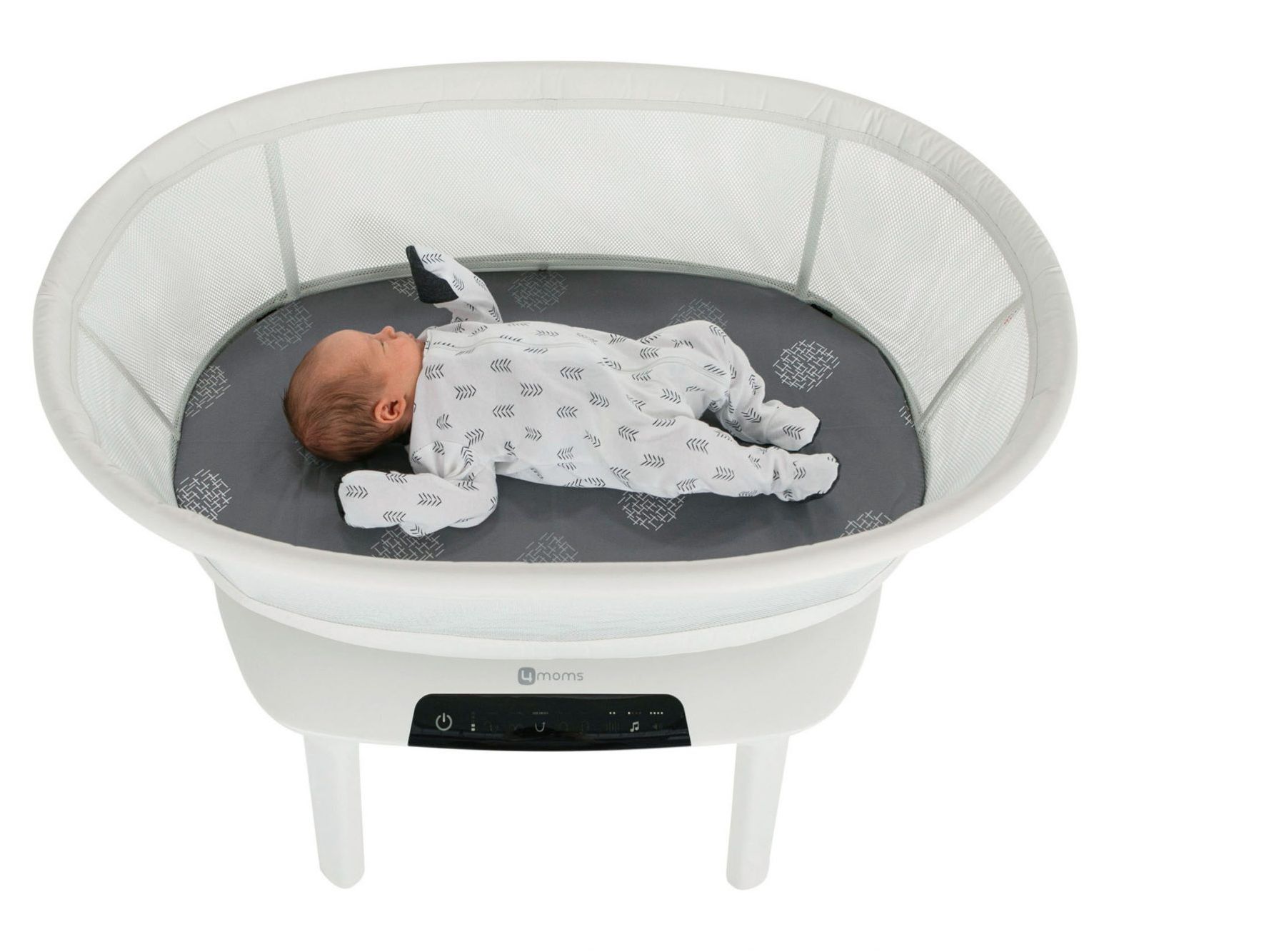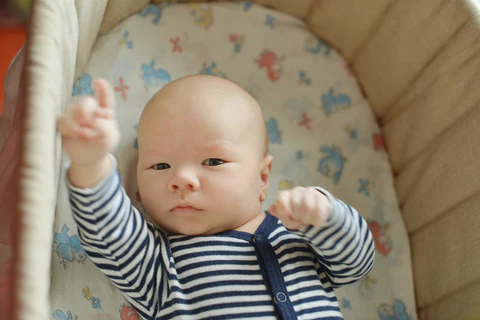
You’ve just found the most comprehensive source of knowledge, solutions, and strategies for changing your baby’s refusal to sleep in a bassinet. This article will tell you the reason and solution.
Table of Contents
Why Won’t My Baby Sleep In Their Bassinet?
There are several possible explanations for a newborn’s refusal to sleep in a bassinet, including the following:
- They don’t like the confine of the bassinet
- They are gassy or hungry.
- The startle response is rousing them.
- They’re cold or hot.
- They might not be getting enough sleep, and they might not know whether it is night or day.
- Their baby’s diaper is filthy.
What I want to avoid here is commonplace advice.
Like the last one on the list above, you probably know what I’m talking about. Of course, you’ll look for a dirty diaper.
Here’s my point – chances are, there’s more than one reason, and trying to find one answer is a waste of everyone’s time.
We won’t linger on the causes for this reason.
After all that, there is one possible reason that requires explanation. It’s the first item on the list and seems very straightforward.
How To Get A Baby To Sleep In A Bassinet
But even though some of these are common sense, they MUST be a part of a sound plan, so please bear with me.
1. Use The Power Of Routine
You’ve heard this one before.
That is true for a good reason. It’s because it functions.
It’s only a matter of time before you develop the same habit for a bassinet if a nice meal and a warm bath can put them to sleep in your arms.
Ensure that it is always at the same time.
2. Check The Temperature
I refer to the baby’s temperature as well as the ambient temperature of the space. One of the most typical causes of fussy nights is being too hot or cold.
Most likely, you already know this, but just in case, the room should be comfortably cool, between 68 and 72 degrees Fahrenheit.
Being in direct control of it makes that the simple part. You just need to turn the dial to be a good parent.
Every time they doze off in the bassinet, you might notice that they are a little bit warmer or colder than when they’re fussing.
You may even discover a rule regarding pajamas or onesies that is more effective.
3. Rethink Your Lights
Babies prefer darkness. Consider using blackout curtains during the day.
Use a soft night light night instead of the overheads.
That might seem like a simple piece of advice that everyone knows. However, I’ve read success stories from parents who used darkness to get their children to fall asleep in the bassinet.
4. Use The Power Of Smell
This advice may sound awkward, but it’s one of the more useful ones on the list because it gets to the source of the issue.
Your baby may not be at ease in the bassinet simply because they sense the mother’s absence.
Get “into the bassinet” with your baby by making the space smell like you.
To accomplish that, use the sheets in the bassinet and sleep with them for a few nights.
With this one, I’ve read some incredible success tales.
5. Experiment With White Noise
Again, I’m going to assume that if you have a restless rascal on your hands, you already have a white noise machine, but there are other things you can try.
Research the various white noise machines available, read customer reviews and look for sleep patterns that resemble those of your baby.
The reasoning behind this is that if the problem is similar, there is a possibility that the same thing may be helpful.
6 – Make Sure It’s Not Reflux To Causing The Problem
Burping may not be sufficient to make babies who have reflux or gas comfortable. See if it makes any difference to try to keep them upright for 15 to 25 minutes.
To be clear, I’m referring to holding the infant upright in your hands while they are awake. The significant safety risk is posed by sleep positioners and wedges.
7. Get Your Timing Right
Selecting the right time to place a newborn in a bassinet has been the only thing I’ve seen work to encourage them to fall asleep there. As your baby is about to nod off, comfort and cuddle them.
Place them in the bassinet at that time. They might adapt to the new environment more quickly as a result of the bait-and-switch.
Putting the infant in the bassinet after they have fallen asleep is a common error in bassinet sleep training. They ought to be sleepy but aware of the bassinet.
8. Swaddle
Infants sleep sporadically and are easily startled. It occurs frequently as they form the neural connections necessary for walking.
It’s not the best for sleeping in a bassinet.
Swaddling them is the best way to balance it out. Babies who are swaddled won’t startle as easily and will feel less nervous.

9. The Weird Tissue Trick
Here we go even though I have no idea how or why this works. Gently wipe the infant’s face with a soft tissue a few times.
10. Try The Washcloth Trick
The abrupt temperature change from your warm hands to the cold sheets is a common cause for babies to fuss and wake up as you try to put them in a bassinet.
Before putting the baby to sleep, try preheating the sheets with a heated pad or a warm water bottle. It should go without saying, but anything you use to warm the bassinet MUST be removed before putting the baby in.
The head/cheek area is crucial in this situation. They experience the cold there.
11. Get The Right Bassinet
Even if you rock and wrap them up until the cows come home, some of these contemporary bassinets still fall short of what they can do.
Purchasing the SNOO smart bassinet was what for my family made the biggest difference. Although it is expensive, it takes care of everything for you.
To calm a startled or awakened baby, it combines the power of vibration, movement, and sound.
Safety considerations
Numerous actions can be taken to lower the risk of SIDS and other sleep-related injuries in newborn babies.
The American Academy of Pediatrics (AAP) advises parents to keep their infants in the same room with them until they are 1 year old or at least 6 months old.
Neither in the baby’s sleeping areas nor in the areas of the house where they are present, please.
Never place your infant in your bed; always place them on their own sleeping surface on their back.
Make sure the mattress in your baby’s bassinet or crib is firm and the crib sheet is a good fit.
Don’t let your baby sleep in a room with any pillows, blankets, toys, or crib bumpers.
Make sure the temperature in your baby’s room is cozy while they are sleeping. Overheating can result from swaddling and wearing too many layers of clothing.
Stop swaddling your baby for sleep as soon as they begin to attempt to roll over. This will allow them to reach their hands in the event that they need to roll over.
Offer your child a pacifier as they drift off to sleep when they’re ready (typically around 4 weeks if you’re breastfeeding). Remember not to affix the pacifier to any cords or chains, and don’t worry if it falls out after they fall asleep.
SIDS risk can be decreased by breastfeeding your infant.
Conclusion
If your baby is under 8 weeks old, you should be keeping track of her behavior and taking notes to see if reflux or gas might be the cause of her discomfort. She may notice your comfort more than the typical child. If not, you still have time to work on getting your baby to sleep in the bassinet and introducing this new sleeping arrangement. In order to teach your baby that sleep can occur in different ways and to try to undo learned behavior, you will probably need to do some “sleep teaching” with babies 4 months and older if she only sleeps on you.